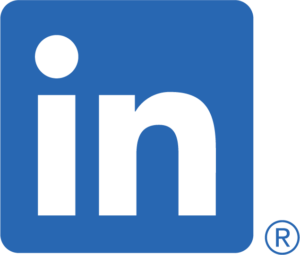 LinkedIn is the most important website for students to incorporate in their job search efforts. Employment recruiters search LinkedIn for candidates far more than any other social network, many employers now want to see LinkedIn profiles rather than conventional résumés, and companies doing background checks are almost certain to look for candidates’ LinkedIn profiles.
LinkedIn is the most important website for students to incorporate in their job search efforts. Employment recruiters search LinkedIn for candidates far more than any other social network, many employers now want to see LinkedIn profiles rather than conventional résumés, and companies doing background checks are almost certain to look for candidates’ LinkedIn profiles.
Encourage students to think of LinkedIn as a “socially networked multimedia résumé.” An effective LinkedIn profile includes all the information from a conventional résumé plus some additional features that help candidates present themselves in compelling ways to potential employers.
Here are nine tips to share with your students for building an effective profile:
- Photo. Add a photo that says “professional” without being overly formal. You don’t need to hire a professional photographer, but the photo needs to be clear and lit well enough so that your face isn’t in shadow. Stand against a visually “quiet” background that won’t distract viewers, dress appropriately for the jobs you are pursuing, and remember to smile.
- Headline. Write a headline that expresses who you are or aspire to be as a professional, such as “Data science major ready to make data come alive through leading-edge techniques in data mining, visualization, and AI.” Include keywords that target employers are likely to be searching for. As with other text fields on LinkedIn, you have a limited number of characters to work with here, so focus on your most valuable attributes.
- Summary. Write a summary that captures where you are and where you are going. Imagine that you are talking to a hiring manager in a personal and conversational tone, telling the story of where you’ve been and where you would like to go—but expressed in terms of meeting an employer’s business needs. Highlight your job experience, education, skills, accomplishments, target industry, and career direction. Unlike the introductory statement on your conventional résumé, which you can fine-tune for every job opportunity, your LinkedIn summary offers a more general picture of who you are as a professional. Be sure to work in as many of the keywords from your research as you can, while keeping the style natural. Employers can use a variety of search tools to find candidates, and they’ll look for these keywords.
- Experience. Fill out the experience section using the material from your conventional résumé. Make sure the details of your employment match your résumé, as employers are likely to cross-check. However, you can expand beyond those basics, such as by including links to photos and videos of work-related accomplishments.
- Recommendations. Ask for recommendations from people you know on LinkedIn. You may have a limited number of connections as you start out, but as your network expands, you’ll have more people to ask. A great way to get recommendations is to give them to the people in your network.
- Featured skills. List your top skills and areas of expertise. As you expand your network, endorse the skills of people you know; many users will endorse your skills in return.
- Education. Make sure your educational listing is complete and matches the information on your conventional résumé.
- Accomplishments. LinkedIn offers a variety of categories that let you highlight academic achievements, special projects, publications, professional certifications, important coursework, honors, patents, and more. If you don’t have an extensive work history, use this section to feature academic projects and other accomplishments that demonstrate your skills.
- Volunteer experience and causes. Add volunteering activities and charitable organizations that you support.
For the most current instructions on performing these tasks, students can visit the LinkedIn Help center at www.linkedin.com/help/linkedin. Remind them that the more robust they make their profiles, the better their chances are of catching the eye of company recruiters.
All three titles in the Bovée-Thill Business Communication Series offer in-depth advice on the full range of job-search communication, from researching job opportunities to crafting effective LinkedIn profiles. This coverage includes unique perspectives on personal branding, writing "the story of you," and the Build Your Career activities that guide students through the entire process of developing employment-related messaging. (Build Your Career is available in Excellence in Business Communication 13th Edition and Business Communication Today 15th Edition.)
Adapted from Courtland L. Bovée and John V. Thill, Business Communication Today, 15th Edition, 2021, pp. 540–541.